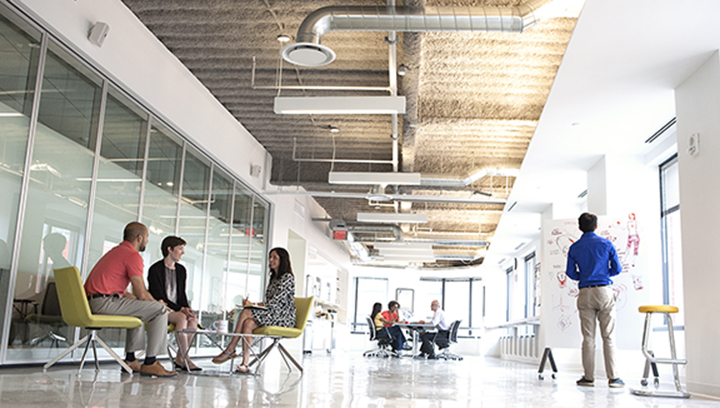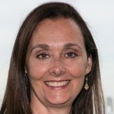
Get Paid to Share Your Expertise
Help shape the future of business through market research studies.
See Research StudiesConsulting firms may help their clients identify new product opportunities and develop go-to-market strategies, but few actually create products.
Cambridge Consultants is different. “We connect our highly qualified engineers to the best product innovation opportunities. We see ourselves as a full-lifecycle innovation partner. We don’t just consult – we actually create products,” says David Bradshaw, US General Manager of Cambridge Consultants in Boston.
Cambridge Consultants, a product development and technology consulting firm, was founded in the UK over 50 years ago. In contrast to the UK office, which is more established, has 450 employees and a very large wireless practice, Cambridge Consultants’ Boston office has 50 employees and “feels more like a start-up with a very collaborative culture,” says Bradshaw. About 70% of Cambridge’s business is in wireless and medical technology development. The Boston office does most of its work in medical device and consumer product innovation. Medical device innovation, the firm’s fastest growing segment for the past 7-8 years, focuses on four areas: drug delivery devices, diagnostic instruments, surgical tools, and wirelessly connected devices.
Technology-Driven Innovation
According to Bradshaw, “We help our clients solve their most challenging commercial problems with technology.” Cambridge Consultants competes with traditional product development firms, engineering firms and industrial design firms. “But those firms are more ‘tell us what you want to develop.’ We have thought leaders. We help set direction, and measure our success by our client’s success,” says Bradshaw.
Cambridge Consultants likes to get involved in the product concept and innovation process as soon as possible. “We have so much expertise internally and unique cross-fertilization opportunities. For example, there is a lot of interest in fitness monitoring on the consumer side. We can mix our consumer products insight with our sensing technology experts from the Medical practice, to create novel and compelling concepts.” Project teams can range from 2-3 people on a due diligence project, to 40-50 people on a large product development project, including engineers, program managers, designers, mathematicians, scientists, and domain experts. A typical project is 18 months from start to fully developed launch, compared to 2-3 years with typical product development groups.
Bradshaw, who joined the UK office in 2000, says there are numerous lessons learned from his innovation work with clients. Most importantly, Bradshaw says, “(is to) focus on the usability of the technology and the relationship the end user has with the product. In the past, we were building technology but not focusing on usability. To be truly valuable, you need to understand the role of the product in the context of its use environment. It can’t just be about the technology in isolation.”
One example of a recent innovation is a very low cost medical diagnostic test taking advantage of the speed and convenience of inkjet printing technology. The idea came out of pro-bono work with a non-profit, with the objective of providing a sub $10 Ebola diagnostic test for developing countries. “Our objective was to devise a low cost, instant Ebola test, which allows people in developing countries to make critical care decisions in the moment. With a traditional diagnostic, you need to send the sample to the lab and wait for it to come back. Our inkjet printing concept allows tests to be created and performed on demand, at the point of care.”
The firm’s corporate development program has led to the launch and spinoff of new businesses. “We have a corporate development program where we set aside a certain amount of time for non-client work, which can be for social good or internal programs. These programs provide an avenue for our staff to pursue their own interests, and work on something they are truly passionate about.” The non-client work has helped Cambridge Consultants spin out 20 companies, including Cambridge Silicon Radio, a company that managed to get its single-chip Bluetooth solution into 70% of the world’s Bluetooth-enabled products soon after it floated on the London Stock Exchange.
Silicon Valley Meets Medical Technology Innovation
Cambridge Consultants’ newly designed space in Boston has the look and feel of a Silicon Valley start-up with a focus on medical device technology. In designing the new office space, the company had three primary objectives:
- Reflect the personality of the firm and communicate the brand. “We are very well known in the UK, but not as well known in the US.”
- Design for functional efficiency. “How will people use the space? We had to think about the user experience, workflow optimization, and modern ways to encourage collaboration.”
- All under one roof. “We are excellent at getting products to market quickly.” Since the firm does all of its engineering work on site, “we wanted to have as much as possible so the engineers can design, prototype and develop products internally. We built a simulated operating room, and surgeons can come in and try it. We have the only anechoic (echo-free) chamber of its kind in Boston to test our pioneering wireless technology, such as Bluetooth-enabled products designed to be implanted in the human body.”

Cambridge Consultants’ anechoic chamber in Boston
Given the Boston office’s rapid growth – they hired 14 people so far this year – Cambridge Consultants is expanding to another floor. A major challenge with such strong growth is finding people qualified to do the work. “We look for candidates with core technical capabilities, as well as commercial and leadership capabilities, and who have the desire to pass that along.” Most people have an engineering or physics background, and most product development cases require that capability to do the work. About 60-70% of the people in the Boston office are engineers and designers, with the rest a mix of product managers, support staff, and people in business development and management roles.
Bradshaw says, “Our culture is defined by intellectual curiosity and collaboration.” He continues, “What attracted me to Cambridge Consultants years ago is what keeps me here today. I like the variety in terms of career development and projects. We get to work with a variety of cutting-edge technologies on a daily basis, and that is both highly educational and tremendously exciting.”

 Susanne Schneider
Susanne Schneider